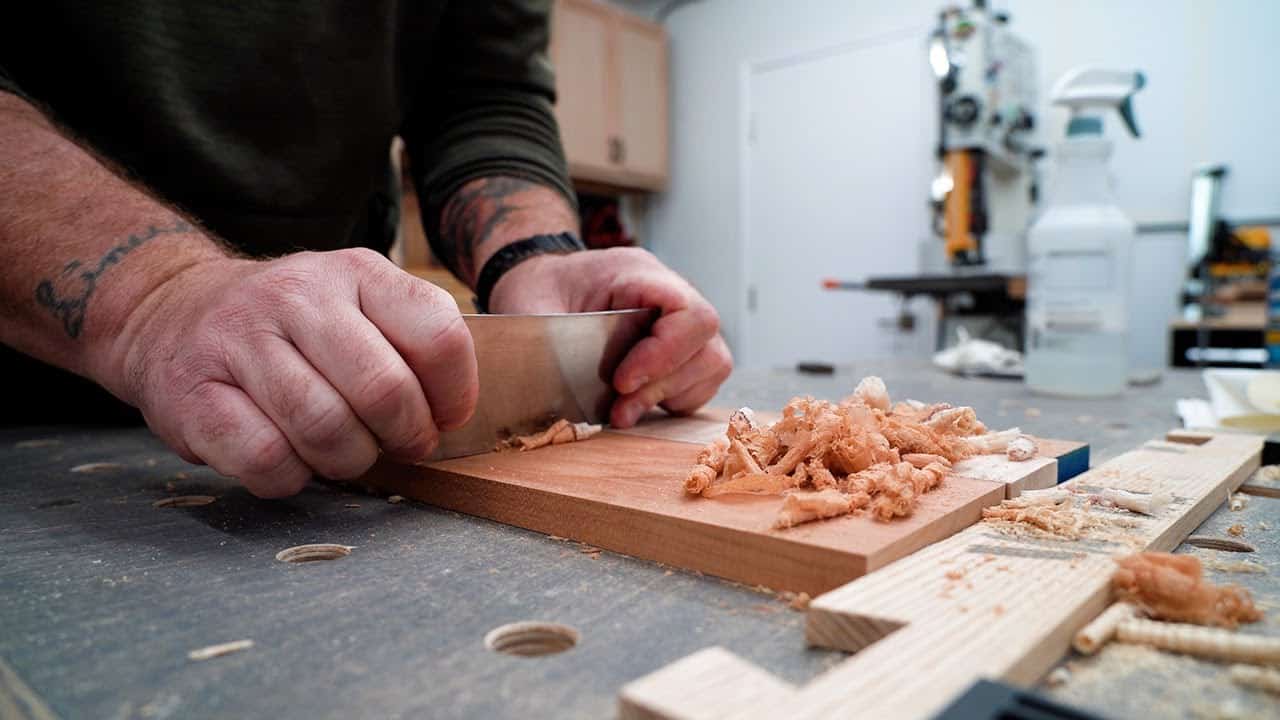This instructional video was created by Jodee from Inspire Woodcraft. He shares a simple and effective way to sharpen a card scraper without needing expensive sharpening systems or specialty equipment.
Card scrapers are often overlooked in woodworking, but with a sharp edge, they can become one of the most versatile tools in the shop. Jodee’s method breaks down the sharpening process so it’s approachable even for beginners.
Watch the full video and subscribe to Jodee’s channel:
What Makes a Card Scraper So Useful?
A well-prepared card scraper can replace sandpaper in many situations, helping remove glue residue, pencil marks, and minor imperfections. Unlike sandpaper, a scraper leaves behind clean shavings instead of dust, offering a smoother and cleaner finish.
Because they require sharpening to work effectively, many woodworkers avoid using them. Jodee’s goal is to show that sharpening doesn’t have to be complicated or intimidating. His straightforward approach helps demystify the process and makes it accessible for woodworkers at any skill level.
Tools and Materials for Sharpening
Jodee prefers using a 1000-grit diamond plate to flatten and hone the edge of the scraper. However, he points out that alternatives like float glass with lapping film can be just as effective, especially for those working with limited budgets.
Another optional but helpful tool is a carbide router bit, which can assist in setting a precise edge angle during the final honing steps. The overall message is clear: you don’t need expensive gear to maintain your card scraper—you can achieve great results with simple tools you may already have.
Starting the Sharpening Process
The first critical step is flattening the edge of the scraper. Jodee emphasizes working at a slight angle rather than head-on. This approach prevents uneven wear and ensures the scraper edge stays flat across its width.
He also stresses the importance of avoiding heavy pressure on the ends. Applying even, light pressure helps keep the edge consistent and avoids rounding the corners—something that would make the scraper less effective.
Raising a Burr
Once the edge is flattened, the next task is to raise a burr. This fine hook at the edge is what actually does the cutting when scraping wood surfaces.
To create the burr, Jodee slightly tilts the scraper while making several passes on the sharpening surface. It’s a subtle motion but essential for forming a clean, functional burr that allows the scraper to produce fine shavings instead of dust.
Testing and Using the Scraper
After sharpening, the card scraper is ready to be put to the test. Jodee shows how bending the scraper slightly with both hands helps engage the burr properly against the wood.
When used correctly, the scraper should produce thin shavings rather than powdery dust. These shavings are a good indicator that the scraper is sharp and tuned properly. If dust appears instead, it usually means the burr needs to be re-formed or that the angle of scraping needs adjusting.
Tips for Better Results
Jodee encourages woodworkers to be patient when learning to use a card scraper effectively. Finding the right combination of bend, angle, and pressure often requires practice, but once mastered, it becomes second nature.
He also recommends trying the scraper on different wood species to get a feel for how it reacts. Harder woods might require a slightly different technique than softer ones, but the basics remain the same: even pressure, correct angle, and a sharp burr.
Another important tip is to periodically check the scraper’s edge during use. If the burr wears down, a quick re-sharpening will restore its effectiveness without needing to start from scratch.
Why This Sharpening Method Works
What makes Jodee’s approach so effective is its simplicity. By focusing on a flat edge and a clean burr—and by using inexpensive, readily available sharpening surfaces—he removes the intimidation factor that often surrounds scraper maintenance.
There’s no need for specialized burnishers, elaborate jigs, or expensive stones. Just a flat surface, a little practice, and an understanding of the fundamentals are enough to maintain a reliable card scraper for years of use.
Sharpening Skills That Pay Off
Maintaining a sharp card scraper saves time and effort on finishing work. It reduces the need for heavy sanding and offers a cleaner surface without the fuzziness that sandpaper can leave behind.
Learning this simple sharpening method not only improves your hand tool skills but also expands what you can accomplish in the shop. It’s a low-cost, high-reward technique that every woodworker should know.
Support Jodee by visiting his online store here: https://inspirewoodcraft.com/collections/all.
